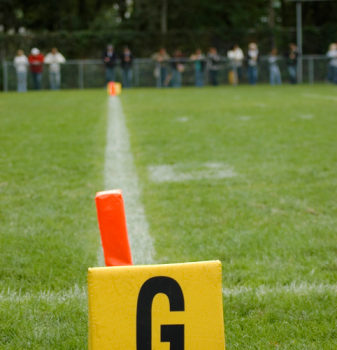 The recent decision by a regional director of the National Labor Relations Board (NLRB) that Northwestern University football players on scholarship are “employees” entitled to unionize under the National Labor Relations Act (NLRA) should serve as a wake-up call for higher education administrators.
The recent decision by a regional director of the National Labor Relations Board (NLRB) that Northwestern University football players on scholarship are “employees” entitled to unionize under the National Labor Relations Act (NLRA) should serve as a wake-up call for higher education administrators.
Part of a trend in which both the NLRB and unions are trying to expand the reach of collective bargaining into previously uncharted territory, the decision carries special significance for schools in New England, where there are many big-time athletic programs and an increasing amount of organizing activity. The Northwestern decision may spur further organizing on New England college and university campuses, including among student athletes.
The Northwestern decision is currently on appeal to the NLRB in Washington and the matter will no doubt be settled by the courts if the NLRB affirms the regional director’s decision. But common sense and practicality alone dictate that the regional decision is unworkable and should be overturned.
If upheld, the decision would add to the confusion of an already-bewildering system. The NLRA applies only to private-sector employers. State entities, including public colleges and universities, are governed by the labor laws of their respective states. The Northwestern decision could result in a hodge-podge of unionized and non-unionized athletic teams, even among those that play each other. Creating even further complications, the Northwestern decision would apply only to scholarship players. “Walk-ons” playing beside scholarship athletes would be excluded from the union.
Constant litigation around these differences would be the norm.
But the fundamental reason for the Northwestern decision being unworkable is that students are simply not employees. They are admitted to school, not hired at a school. That certain sports programs bring in revenue does not change that fact. The development of character, skill and focus are among the educational values embodied in college sports. These goals hold true for the rowing team, the chorus, the orchestra and the marching band. All have rules. The participants are governed by myriad academic regulations and requirements. Some of the participants are granted scholarships. The likely result of a decision affirming the Northwestern ruling would be a plethora of petitions seeking collective bargaining for virtually every private-sector college activity in which scholarships are granted and “revenue,” however defined, is generated. The operational, social, financial and educational implications for the institution would be staggering.
The NLRB long ago concluded that even students whose “work” is an inherent feature of an academic program are not “employees” within the meaning of the NLRA. For example, in the Brown University decision in 2004, the NLRB ruled that graduate student assistants are not employees within the meaning of the law because their relationship to the university was primarily educational, not economic. The Northwestern decision will likely be viewed as an opportunity by the current NLRB—whose composition has radically changed since the Brown decision—to overrule Brown and open the door to organizing among graduate student assistants and a host of other classifications. If that occurs and is sustained by the courts, there will be a paradigm shift in private-sector higher education.
The dissenters in the Brown decision—whose successors are now in the majority—contended that collective bargaining and academic freedom would co-exist without problems. This myopic view ignores the irreconcilable collision between a union’s right to demand collective bargaining and a university’s prerogative to run its institution. For example, unionized Northwestern football players would be entitled to bargain nearly every aspect of their university experience—including degree requirements, class attendance requirements, amount and value of scholarships, rules regarding practice and exams, even dietary choices on game day—because the scope of bargaining over “terms and conditions of employment” is virtually unlimited in the private sector. Indeed, a union of football players could even demand that “walk-ons” be excluded entirely from the team because they are illegally performing “bargaining unit work.” Is this what we want higher education to look like?
The unionization of private-sector college athletes would also raise complicated questions about the applicability of a host of other laws that govern the workplace. Would unionized students be entitled to worker’s compensation? Unemployment during the summer? Overtime for hours “worked” over 40? The list is virtually endless.
The implications of an upheld Northwestern decision would be enormous for private-sector New England higher educational institutions. The region is home to both a large number of Division One athletic teams in a variety of sports and aggressive union organizing. Just days ago, part-time professors at Northeastern University voted to form a union. Local college administrators should join the chorus of those who weigh in on this important issue. College athletics could probably use some reforms. Unionizing student athletes is not one of them.
Joseph W. Ambash is managing partner of the Boston office of Fisher & Phillips LLP, a national law firm representing employers in labor and employment matters. He has extensive experience representing private and public higher education institutions and took part in the Brown University case mentioned here.
[ssba]
